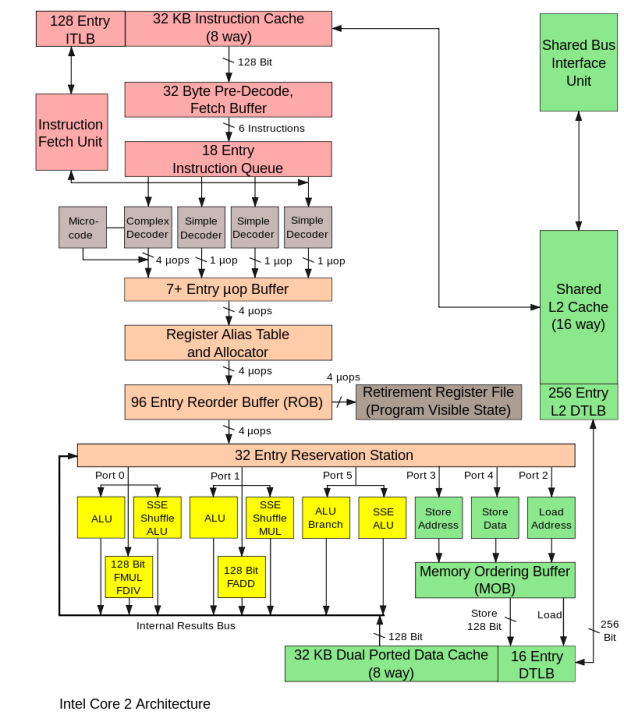Engr. Dr. Muhammad Nawaz Iqbal
Occasionally, this fad is referred to as throughput computing. This concept first appeared in the mainframe industry, where online transaction processing placed an emphasis on handling large numbers of transactions rather than just the speed at which one transaction could be executed. The last ten years have seen a significant increase in transaction-based applications like network routing and website serving, which has caused the computer industry to emphasis capacity and throughput issues once again. The specific microarchitecture is typically represented by the system designer as a type of data flow diagram. The microarchitecture diagram, like a block diagram, uses a single schematic symbol to represent each microarchitectural component, such as the arithmetic and logic unit and the register file. To distinguish between three-state buses (which need a three-state buffer for each device that drives the bus), unidirectional buses always driven by a single source, such as the way the address bus on simpler computers is always driven by the memory address register, and individual control lines, the diagram typically connects those elements with arrows, thick lines, and thin lines.A schematic outlining the links between the logic gates needed to build each microarchitectural component is used to illustrate each one in turn. Each logic gate in a given logic family is represented by a circuit diagram that shows the connections between the transistors that were utilized to create it.
Microarchitecture also requires execution units. Arithmetic logic units, floating point units, load/store units, branch prediction, and SIMD are examples of execution units. These components carry out the processor’s actions or calculations. A key microarchitectural design challenge is selecting the number of execution units, their delay, and their throughput. Microarchitectural choices also affect the size, latency, throughput, and connection of the system’s memories.
What each component of the computer should be performing is determined by the control logic’s cycle clock, cycle state either high or low, and instruction decode register bits. A table of bits defining the control signals to each component of the computer in each cycle of each instruction can be created in order to construct the control logic. This logic table can then be examined in a computer simulation that is executing test code. A logic table that is stored in memory and utilized to power a genuine computer is referred to as a microprogram.
Multiprocessing is a term used in operating systems to describe the execution of numerous concurrent processes in a system, each executing on a different CPU or core as opposed to just one process running at a time. Multitasking, which may only employ a single processor but switches it between tasks in time slices, is commonly contrasted with multiprocessing when used with this meaning example a time-sharing system). However, multiprocessing refers to the actual concurrent execution of numerous programmes on multiple processors.
All CPUs in a multiprocessing system might be equal, or some might be set aside for specific tasks. The symmetry (or lack thereof) in a given system is determined by a mix of hardware and operating system software design concerns. The execution of kernel-mode code may be limited to only one specific CPU, whereas user-mode code may be executed in any combination of processors, depending on hardware or software considerations. For instance, only one specific CPU may be required to respond to all hardware interrupts, whereas all other work in the system may be equally distributed among CPUs.
In multiprocessing, the processors can be utilized to execute numerous sequences of instructions in a single context, or a single sequence of instructions in multiple contexts single instruction, multiple data, or SIMD, which is frequently used in vector processing. n








